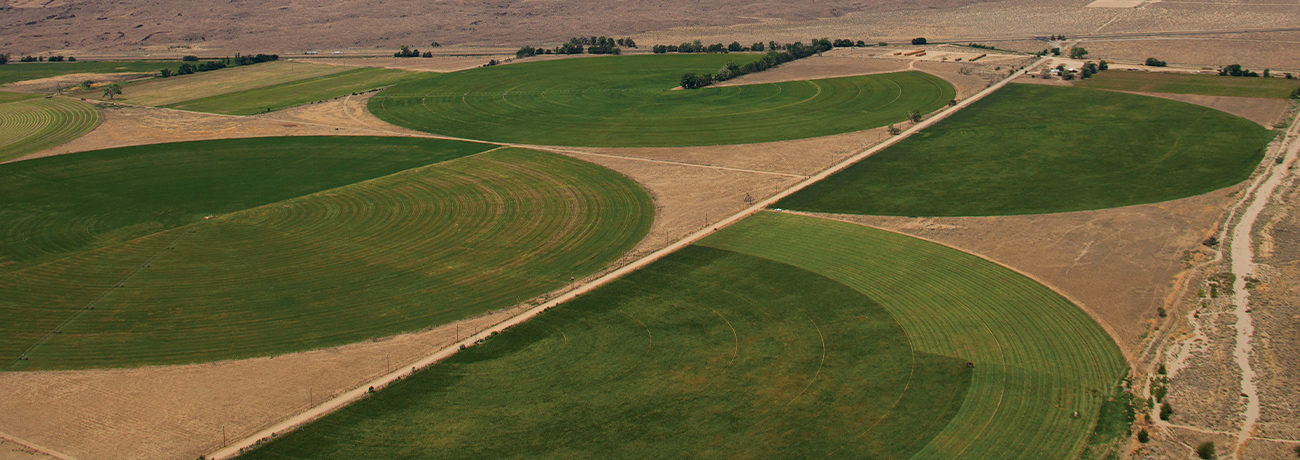Zimmatic Blog
8 Predictions for the Global Ag Industry in 2023
Jan 31, 2023

The beginning of the calendar year offers a great opportunity for growers to make plans that help tackle the uncertainties they face each growing season. Let’s take a brief look at some global ag industry predictions for this year’s challenges —and opportunities.
#1 Sustainable growing’s taproot will deepen
From Gen X through Gen Z, a majority of consumers prioritize sustainability and are willing to pay more to support this shift. At the same time, governmental bodies and investment groups are looking to reinforce more sustainable practices.
Farmers, too, share concern for changing environmental conditions and are responding with measurable efforts to conserve inputs, including water and chemicals. Check out our blog post about key efforts growers are making, including using irrigation technology like FieldNET to save 374 million gallons of water to date.
#2 Food insecurity will grow — and we need to respond now
Last year, the United Nations World Food Programme released statistics that deserve a second look: the number of food-insecure people grew dramatically, from 135 million in 2019 to 345 million in 2022.
At the same time, costs for key inputs like fertilizers soared in 2022. In response, growers are adopting precision management techniques to stretch water and chemicals while increasing production. Check out these four ways to do more with less.
#3 Changing weather conditions
In some areas, drought is driving regulators to limit water consumption. Farmers, even those in areas without current regulations, should anticipate greater scrutiny on water use.
Tools like magnetic flow meters help growers accurately pinpoint water usage, and technology like FieldNET Advisor provides real-time, field-specific irrigation recommendations for optimization.
#4 Water recycling will help support a more resilient future
We need to use every tool in the toolbox to stretch water usage. Especially as conditions grow more dire in certain locations, new regulations may even mandate water recycling.
Wastewater from livestock production offers farmers a nutrient-rich resource that’s liquid gold when applied correctly. Pivot irrigation can facilitate precise application, ensuring the right balance of nutrients applied at the right time. This circular approach to water is a win-win for us all.
#5 Advanced technology will transform irrigation
While all of agriculture is analyzing how automation and technology can play a role, irrigation has been among the first in the industry to truly embrace these new tools.
For farmers, forecasting and prediction can drive irrigation strategies, reduce errors and help maintain production. Using the same complex combination of weather forecasts, growth models and on-the-ground conditions as FieldNET Advisor, FieldNET with WaterTrendSM offers a 7-day water outlook for efficient, effective irrigation. (And it’s included in every FieldNET subscription!) Variable rate irrigation is another data-powered tool that fine-tunes applications of water and chemicals while also minimizing overwatering, runoff and nutrient leaching.
#6 Creativity will help overcome obstacles
When farmers have challenges, they respond with pragmatic ingenuity. (That’s one reason why we love our customers!) While price increases or product constraints may continue throughout 2023, a new focus can overcome these hurdles.
For example, with fertilizer costs at an all-time high, many growers are turning to fertigation to apply fertilizer through their irrigation systems. Center pivot irrigation systems can “spoon feed” the proper nutrients. Review or upgrade equipment to make the most of this approach, and get more tips in this recent blog post.
#7 More farmers will explore biotechnology
Genetically engineered crops offer significant promise for boosting yield while reducing inputs. With the rise in food insecurity, we must not leave any stone unturned when it comes to feeding the world.
Plant geneticists are currently testing an engineered variety of rice that produced 40% more grain through more effective photosynthesis.
This trial – and many others – are promising. We’ll keep an eye on any research developments through 2023 and beyond.
#8 Innovation will support healthy soil
Historically, farmers have supported holistic soil health through techniques like low-till/no-till, cover cropping and crop rotation. But as technology has evolved, powerful tools are emerging to make more measurable sustainability gains.
Some promising soil-management tools include precision agriculture, which taps into the power of big data using remote sensors and monitoring, drones and more. FieldNET and FieldNET Advisor are leading products in precision irrigation. The Internet of Things will play a key role in supporting soil, with networked sensors that provide instant feedback regarding moisture, temperature, fertility and solar radiation.
To discuss how any of these predictions might impact your operation, chat with your nearest Zimmatic dealer regarding upgrades you can make now to save money, reduce inputs and boost yields.